YOUR WEALTH CONNECTION
May 2022
Sweet April showers do spring May Flowers
— Thomas Tusser (1500s)
To learn more about our services, team, and upcoming events please visit our website www.HilltopWealthTax.com
As always, we are honored and humbled that you have given us the opportunity to serve as your financial advisor.
Erik W. Brenner CFP® NSSA®
CEO, President and Private Wealth Advisor


Hilltop moms were honored on May 10th with all the traditions of Mother’s Day breakfasts, hand-made art pieces, dandelion bouquets, and long-distance phone calls from their once little ones. Our crew of moms are celebrated here – we hope these photo’s bring a smile!

(left) Ashley McClure and her little-man Finn (center & right) Tawny Holcomb enjoying Kit & Scout

(left) Ashley McClure and her little-man Finn (center & right) Tawny Holcomb enjoying Kit & Scout

Megan Washington’s trio featuring Trellus, Taryn, Marena

Kimberly Williams not so little ones Charles, Cierra, Ryan, Jordan
Allow us the opportunity to build you a custom Retirement Roadmap and we’ll send you a $100 Gas Card.
INFORMATIVE

The Fed Gears Up for Shock and Awe
Since the beginning of the year, the markets have been rattled by persistently high inflation and the question of how the Federal Reserve might respond.
In March, it began with a simple 25 bp (bp = basis points, 1 bp = 0.01%) rate hike in the fed funds rate to 0.25%-0.50%.
Unlike the rate-hike cycle of the 2000s and the very gradual increases in the 2010s, inflation is a big problem today.
We are receiving comments from key Fed officials that “it is of paramount importance to get inflation down” (Wall Street Journal).
Or: Today’s high inflation “is as harmful as not having a job…. If you don’t have the confidence [the Fed will use its inflation-fighting tools], let me give it to you“ (CNBC). So we can’t expect the baby steps we’ve grown accustomed to.
This is your father’s rate-hike cycle
Based on commentary from most Fed officials during April, shock and awe is the most likely approach. One closely followed measure from the CME Group suggests a 50 bp rate hike at the May 4 meeting, 75 bp in mid-June, and another 50 bp in July.
That is to say, we may see the most aggressive pace of tightening in almost 30 years.
An aggressive tightening cycle can generate volatility in two ways.
First, higher interest rates compete more effectively for an investor’s dollar, siphoning cash away from stocks. Second, higher interest rates can slow economic growth, which may put the brakes on profit growth.
In addition to higher interest rates, the Fed is set to let the bonds it purchased in 2020 and 2021 runoff its balance sheet in a measured fashion. In other words, investors are not only grappling with higher interest rates, the runoff in bonds may create additional obstacles.
Performance bears this out. With four months behind us, the S&P 500 Index is off to its worst year-to-date start since 1939, according to Dow Jones Market Data (WSJ).
Table 1: Key Index Returns
| MTD % | YTD % |
Dow Jones Industrial Average | -4.9 | -9.3 |
NASDAQ Composite | -13.2 | -21.2 |
S&P 500 Index | -8.8 | -13.3 |
Russell 2000 Index | -10.0 | -17.0 |
MSCI World ex-USA* | -6.9 | -12.0 |
MSCI Emerging Markets* | -5.8 | -12.7 |
Bloomberg US Agg Bond TR USD | -3.8 | -9.5 |
Source: Wall Street Journal, MSCI.com, MarketWatch, Morningstar
MTD returns: Mar 31, 2022-Apr 29, 2022
YTD returns: Dec 31, 2021-Apr 29, 2022
*In US dollars
And fears are rising that the Fed’s new-found inflation-fighting backbone might choke off economic growth. Should we be concerned?
GDP unexpectedly contracted in Q1 at an annualized pace of 1.4%, according to the U.S. BEA. But the decline was related to one-off factors.
During Q4 2021, GDP surged 6.9%—also due to technical factors. We believe it’s better to average the last two quarters. Besides, an acceleration in consumer and business spending during Q1 was encouraging.
Here are a few other encouraging stats.
An astonishing 1.7 million jobs were created in the first three months of the year, per the U.S. BLS.
First-time claims for unemployment insurance are hovering near the record low set in the late 1960s—records date back to 1967 (Department of Labor). Further, business openings are at a record high (U.S. BLS), in part because business activity has been strong.
Let’s look at some of the anecdotal evidence. If the economy is weak, consumers shy away from discretionary purchases. When it comes to travel and entertainment, that’s not happening.
Airlines are seeing strong demand (CNBC), and an April 23 story in the Wall Street Journal highlighted aggressive pricing for summer concerts as fans eagerly line up to buy tickets.
Here’s an interesting remark from the CEO of McDonald’s, who said the consumer is in “good shape” because customers are still ordering items for delivery, the most expensive way to buy due to the hefty convenience fees (CNBC).
Put another way, we complain about inflation, but we complain while in line to make a purchase.
Still, stimulus money stashed in savings accounts may be aiding overall spending, which may be artificially supporting growth. Per U.S. BEA data, incomes are not keeping up with inflation, which could eventually create resistance to higher prices just as the Fed is lifting rates and raising the cost of money.
What will it take to stabilize the market?
High inflation, worries about the Fed, slowing global growth, and the ongoing war in Ukraine are well known. The pullback in stocks reflects the high level of negative sentiment, and at least in part, stiff headwinds are already priced in.
Are we at or near a bottom? We don’t try to call bottoms or tops, and that articulate analyst on the financial news network may be smart, but they don’t have a crystal ball.
Let’s share some thoughts about various possibilities.
If Russia were to suddenly end its hostilities in Ukraine, a significant short-term headwind would be eliminated. Sadly, this best-case scenario, which would end the needless suffering in Ukraine, is highly unlikely.
More realistically, investors want signs that inflation is not only peaking but on a downward path. Why? It would reduce the need for steep rate hikes.
Powell and the Fed are hoping to slow inflation without tipping the economy into a recession. But they will need skill and some luck.
For starters, the dollar is flexing its muscle on foreign exchanges. A strong dollar may reduce import price inflation. But the Fed will need more help from the supply chain, which has been slow in coming. Today, new Covid lockdowns in China are exacerbating problems.
We do not believe investors should be taking outsized risks. Successful investors are disciplined. They refuse to let excess optimism or pessimism guide their decisions.
It is time to employ a disciplined approach and maintain recommended asset allocations. Just as these ‘guardrails’ can keep you from lurching into riskier assets when stocks are quickly rising (and we feel invincible), the parameters are also in place to prevent emotion-based decisions that can sidetrack you from your long-term goals.
If markets continue to slip shorter-term, rebalancing helps add to your positions when stocks are down, i.e., buying low.
We trust you’ve found this review to be educational and helpful. If you have any questions or would like to discuss any matters, we are always only an email or phone call away. As always, thank you for the trust, confidence, and the opportunity to serve as your financial advisor.
Disclosure:
This presentation is not intended to be relied upon as forecast, research or investment advice, and is not a recommendation, offer or solicitation to buy or sell any securities or to adopt any investment strategy. The opinions expressed are as of the date noted and may change as subsequent conditions vary. The information and opinions contained in this letter are derived from proprietary and nonproprietary sources deemed by Hilltop Wealth Solutions to be reliable.
Additional information about Hilltop Wealth Solutions is available in its current disclosure documents, Form ADV, Form ADV Part 2A Brochure, and Client Relationship Summary Report which are accessible online via the SEC’s investment Adviser Public Disclosure (IAPD) database at www.adviserinfo.sec.gov, using SEC # 801-115255. Hilltop Wealth Solutions is neither an attorney nor an accountant, and no portion of this content should be interpreted as legal, accounting or tax advice.
THE RETIREMENT REALITY CHECK
Little things to keep in mind for life after work.
Provided by Hilltop Wealth & Tax Solutions
Decades ago, there was a book entitled What They Don’t Teach You at Harvard Business School. Perhaps someday, another book will appear to discuss certain aspects of the retirement experience that go unrecognized – the “fine print”, if you will. Here are some little things that can be frequently overlooked.
How will you save in retirement? More and more baby boomers are retiring with the hope that they can become centenarians. That may prove true thanks to healthcare advances and generally healthier lifestyles.
We all save for retirement; with our increasing longevity, we will also need to save in retirement for the (presumed) decades ahead. That means more than budgeting; it means investing with growth and tax efficiency in mind year after year.
Could your cash flow be more important than your savings? While the #1 retirement fear is someday running out of money, your income stream may actually prove more important than your retirement nest egg. How great will the income stream be from your accumulated wealth?1
You might have heard of the 4% rule, the concept that retirees should plan to withdraw 4% of the funds in their retirement account balance for each year of retirement. The truth is, figuring out how much money you can or should withdraw each year from your retirement account is a complicated calculation that’s often best left to a financial professional.2
Opinions vary, and your strategy should always take into account your unique situation. For example, some research suggests that 3.3% is a better goal than 4%. That means, assuming a $1 million account balance, you’d withdraw $33,000 instead of $40,000 during your first year of retirement. A $7,000 annual difference could present you with significant budgeting decisions to make.2
What will you begin doing in retirement? In the classic retirement dream, every day feels like a Saturday. Your reward for decades of work is 24/7 freedom. But might all that freedom leave you bored?
Impossible, you say? It happens. Some people retire with only a vague idea of “what’s next”. After a few months or years, they find themselves in the doldrums. Shouldn’t they be doing something with all that time on their hands?
A goal-oriented retirement has its virtues. Purpose leads to objectives, objectives lead to strategies, and strategies can impart some structure and order to your days and weeks – and that can help cure retirement listlessness.
Will your spouse want to live the way that you live? Many couples retire with shared goals, but they find that their ambitions and day-to-day routines differ. Over time, this dissonance can be aggravating. A conversation or two may help you iron out potential conflicts. While your spouse’s “picture” of retirement will not simply be a mental photocopy of your own, the variance in retirement visions may surprise you.
When should you (and your spouse) claim Social Security benefits? “As soon as possible” may not be the wisest answer. An analysis is needed. Talk with the financial professional you trust and run the numbers. If you can wait and apply for Social Security strategically, you might realize as much as hundreds of thousands of dollars more in benefits over your lifetimes.
Erik Brenner, CFP® may be reached at 574.889.7526 | www.HilltopWealthTax.com
Additional information about Hilltop Wealth Solutions is available in its current disclosure documents, Form ADV, Form ADV Part 2A Brochure, and Client Relationship Summary Report which are accessible online via the SEC’s investment Adviser Public Disclosure (IAPD) database at www.adviserinfo.sec.gov, using SEC # 801-115255. Hilltop Wealth Solutions is neither an attorney nor an accountant, and no portion of this content should be interpreted as legal, accounting or tax advice.
Citations.
1 – transamericacenter.org/docs/default-source/retirement-survey-of-workers/tcrs2021_sr_four-generations-living-in-a-pandemic.pdf [8/1/21]
2 – cnbc.com/2021/11/11/the-4percent-rule-a-popular-retirement-income-strategy-may-be-outdated.html spending [11/11/21]


Should You Downsize for Retirement?
Some retirees save a great deal of money by doing so; others do not.
Provided by Hilltop Wealth & Tax Solutions
You want to retire, and you own a large home that is nearly or fully paid off. The kids are gone, but the upkeep costs haven’t fallen. Should you retire and keep your home? Or sell your home and retire? Maybe it’s time to downsize.
Lower housing expenses could put more cash in your pocket. If your home isn’t paid off yet, have you considered how much money is going toward the home loan? When you took out your mortgage, your lender likely wanted your monthly payment to amount to no more than 28% of your total gross income, or no more than 36% of your total monthly debt repayments. Those are pretty standard metrics in the mortgage industry.1
What percentage of your gross income are you devoting to your mortgage payments today? Even if your home loan is 15 or 20 years old, you still may be devoting a significant part of your gross income to it. When you move to a smaller home, your mortgage expenses may lessen (or disappear) and your cash flow may greatly increase.
You might even be able to buy a smaller home with cash (if finances permit) and cut your tax liability. Optionally, that smaller home could be in a state or region with lower income taxes and a lower cost of living.
You could capitalize on some home equity. Why not convert some home equity into retirement income? If you were forced into early retirement by some corporate downsizing, you might have a sudden and pressing need for retirement capital, another reason to sell that home you bought decades ago and head for a smaller one.
The lifestyle reasons to downsize (or not). Maybe your home is too much to keep up, or maybe you don’t want to climb stairs anymore. Maybe a condo or an over-55 community appeals to you. Maybe you want to be where it seldom snows.
On the other hand, you may want and need the familiarity of your current home and your immediate neighborhood (not to mention the friends close by).
Sometimes retirees underestimate the cost of downsizing. Even the logistics can be expensive. Just packing up and moving a two-to-three-bedroom home will cost about $1,250 if you are resettling locally. If you are sending it long distance, you can expect the journey to cost around $5,000, if not more. If you can’t sell or move everything, the excess may go into storage, and the price tag on that may be around $90 a month. In selling your home, you will probably pay commissions to both your agent and the buyer’s agent that add up to 6% of the sale price.2,3,4
Some people want to retire and then sell their home, but it may be wiser to sell a home and then retire if the real estate market slows. If you sell sooner instead of later, you can always rent until you find a smaller house that could save you thousands (or tens of thousands) of dollars over time.
Run the numbers as accurately as you think you can before you make a move. Downsizing always seems to have a hidden cost or two, but for many retirees, it can open a door to long-term savings. Other seniors may find it cheaper to age in place.
Erik Brenner, CFP® may be reached at 574.889.7526 | www.HilltopWealthTax.com
This material was prepared by MarketingPro, Inc., and does not necessarily represent the views of the presenting party, nor their affiliates. This information has been derived from sources believed to be accurate. Please note – investing involves risk, and past performance is no guarantee of future results. The publisher is not engaged in rendering legal, accounting or other professional services. If assistance is needed, the reader is advised to engage the services of a competent professional. This information should not be construed as investment, tax or legal advice and may not be relied on for the purpose of avoiding any Federal tax penalty. This is neither a solicitation nor recommendation to purchase or sell any investment or insurance product or service, and should not be relied upon as such. All indices are unmanaged and are not illustrative of any particular investment.
Additional information about Hilltop Wealth Solutions is available in its current disclosure documents, Form ADV, Form ADV Part 2A Brochure, and Client Relationship Summary Report which are accessible online via the SEC’s investment Adviser Public Disclosure (IAPD) database at www.adviserinfo.sec.gov, using SEC # 801-115255. Hilltop Wealth Solutions is neither an attorney nor an accountant, and no portion of this content should be interpreted as legal, accounting or tax advice.
Citations.
1 – nerdwallet.com/blog/mortgages/two-ways-to-determine-how-much-house-you-can-afford/ [4/26/22]
2 – investopedia.com/articles/personal-finance/061914/downsides-downsizing-retirement.asp [9/16/21]
3 – moving.com/movers/moving-cost-calculator.asp [4/27/22]
4 – gobankingrates.com/saving-money/home/why-still-wasting-money-storage-units/ [8/31/21]
MARKET UPDATE
ADVISORS' PERSPECTIVE
So far in 2022, we have seen most major asset classes suffer, with the S&P 500 down nearly 13% and the Bloomberg US Aggregate down 9.5%. Correlations tend to rise in drawdowns but the recent performance in the bond market has been particularly difficult over the last few months. The Bloomberg US Aggregate index has the worst start to a year since the index began publishing daily data in 1989.
April was a discouraging month for investors as markets continued to contend with the Federal Reserve’s monetary tightening, rising rates, persistent inflation, Covid case spikes in China and the ongoing war in Ukraine. The combined environment has made it particularly difficult for the bond market to get a sense of direction with rapidly changing expectations over the last few months combined with concerns over the direction of the economy.
The last two weeks of April saw falling prices across most global equities, especially the last trading day of the month, which has confirmed a negative trending market. Continued fears about the magnitude of future Federal Reserve rate hikes and the unexpected negative GDP headline likely put pressure on any risky assets.
The whispers of recession have struck fear in investors as Q1 GDP was negative for the first time since the beginning of the pandemic. However, keep in mind that the economy is much more complex than the GDP calculation alone. Labor, housing, and spending look strong while other areas, such as the trade deficit, look poor. Time will tell if we are currently in a recession, but our economic research sees the economy as normal – relative to history.
Eyes continue to be on The Fed this week and leading up to the June meeting. Since their last meeting, the outlook for the economy has deteriorated and markets have thrown a tantrum. Fed officials have been far more outspoken about their determination to fight inflation with rate hikes, and that has injected more fear of an economic downturn into markets.
During these troublesome times, we emphasis more than ever to follow the data and not be a prisoner of the moment. We are working diligently behind the scenes to put every client’s portfolio in the best position for success. Our partnership with Helios allows us to recalculate our models on a bi-weekly basis, and if necessary, to make appropriate changes based heavily on the data drawn from the current market and economic conditions.HILLTOP TAX SOLUTIONS
Did you know?
1. Recording/allocating transactions
2. Generating/reviewing financial statements
3. Bank reconciliations
4. Generating period end adjusting entries
5. Accounting recommendations
6. Accounting software set up (additional fee)

CLICK HERE to find out how your family member, friend,
or coworker can get in contact with us!
TEAM HILLTOP
WORKS HARD.
PLAYS HARD.
AND COMPETES INTENSLY!
Recently, the team came together for a much-deserved post-tax season evening of fun and laughter. All enjoyed hitting the lanes at Strikes & Spares but the real excitement took place on the go-kart track where Marla Brenner was ejected from the course following a tense struggle to take the lead resulting in a two kart spin-out.
Unfortunately, this wasn’t Marla’s first offense! Other highlights included Erik Brenner posting the highest overall game and Jenn Whitmore arriving for a friendly game of tenpins sporting her own shoes, ball and bowling bag!


For more entertaining Team Hilltop antics, check out our social media outlets!
HILLTOP SPOTLIGHT
MEET OUR INVESTMENT ASSOCIATE
Tareq Jallaf


MAY TRIVIA: As always, please submit your responses to Betsy Couse and those who answer all three questions correctly will be entered into a drawing to win this month’s prize. Good Luck!
1. This month’s Hilltop Spotlight features investment associate Tareq Jallaf. What did he say his favorite flavor from childhood was?
2. What date did the Fed increase rates by 50 basis points?
3. What is Betsy Couse’s grand-daughters name?
This letter is not intended to be relied upon as forecast, research or investment advice, and is not a recommendation, offer or solicitation to buy or sell any securities or to adopt any investment strategy. The opinions expressed are as of the date noted and may change as subsequent conditions vary. The information and opinions contained in this letter are derived from proprietary and nonproprietary sources deemed by Hilltop Wealth Solutions to be reliable. The letter may contain “forward-looking” information that is not purely historical in nature. Such information may include, among other things, projection and forecasts. There is no guarantee that any forecast made will materialize. Reliance upon information in this letter is at the sole discretion of the reader.


